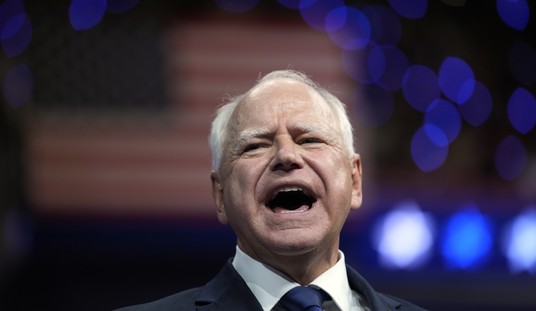Via Instapundit, this is the chart to keep in mind when it comes to deficits and campaign promises. It’s pretty self-explanatory, but pay close attention to the huge jump in deficit spending between FY2008 and FY2009 — and the very large gap between White House and even CBO estimates and reality (in gray) in FY2010-12:
A few things to bear in mind:
- As Glenn Reynolds notes, the war spending began in FY2002 for Afghanistan and FY2003 for Iraq. Also, the Bush-era tax rate reductions were fully implemented in FY2003, but probably had their full impact in FY2004. The combination pushed deficits higher, but the economic growth generated by the recovery produced lower deficits each of the next three fiscal years.
- The FY2007 budget was the last fully Republican budget, passed in 2006 before the midterm elections that gave Democrats control of Congress in January 2007.
- The FY2008 budget was the last one signed by a Republican President. In 2008 for the FY2009 budget, the Democratic majorities in Congress refused to produce a budget before the election and then passed a series of continuing resolutions that continued spending at FY2008 levels until Barack Obama signed the finalized FY2009 budget in March 2009. There is one exception to this, though; Bush signed TARP in October 2008, which added $700 billion dollars in spending (in two tranches) and contributed significantly to the big deficit in FY2009.
Deficits are, however, one side of the equation. Democrats argue that these massive (and sudden) budget imbalances are due to a revenue issue, specifically that the rich don’t pay their fair share in taxes. They want to raise revenues to put us back to the deficit levels of the Bush era. However, Heritage has another chart that’s not terribly new showing that the problem is (mostly) on the spending side of the ledger. This shows federal spending, actual and projected, on a per-household basis in inflation-adjusted dollars for the last 47 years, and projected out along current trajectories for the next ten:
There are also a couple of things to keep in mind here, too:
- The first big jump came during LBJ’s Great Society entitlement expansion program. The rate of increase, though, was fairly potent during the phase from 1975-1990. After that, it flattens out for more than a decade, thanks in part to the change of control in Congress and the continuing expansion of wealth during the Reagan boom.
- In the early 2000s, the Republican-controlled Congress and George W. Bush began another steep increase in per-household federal spending, which continued long after the 2003 recession ended.
- By far the steepest increase in the chart came in 2009, thanks to the bailouts and Barack Obama’s federal stimulus package. In three short years, federal spending per household leaped upward over $5,000 per year from its previous high, or an increase of 21.3% in inflation-adjusted dollars. Even at FY2012 levels, it’s an increase of over 15% from 2006.
- By 2022, we will have increased per-household spending in adjusted dollars by 190% over just 57 years — nearly tripling spending. In FY2012, it’s grown 152%. Median income in adjusted dollars in 1967 (the closest date I could easily find) was $42,056, which means that households have only increased median income in adjusted dollars by 19% over roughly that period of time. That puts the rate of growth of per-household federal spending over that period at eight times that of the rate of growth of median income.
So, we don’t really have a revenue problem here, or at least not primarily a revenue problem. We have a spending problem. Most of that is almost certainly in Medicare and other health-care spending, and it’s certainly going to be the biggest problem in the next few decades. Sequestration isn’t going to solve that. We need to find a way to revamp our safety-net programs to truly reduce spending in order to rebalance the relationship between federal spending and household income. We simply can’t get enough income to support that rate of growth — most of which has been funded by exploding deficits and national debt, the service of which will cost households in future generations even more in federal-spending growth.










Join the conversation as a VIP Member